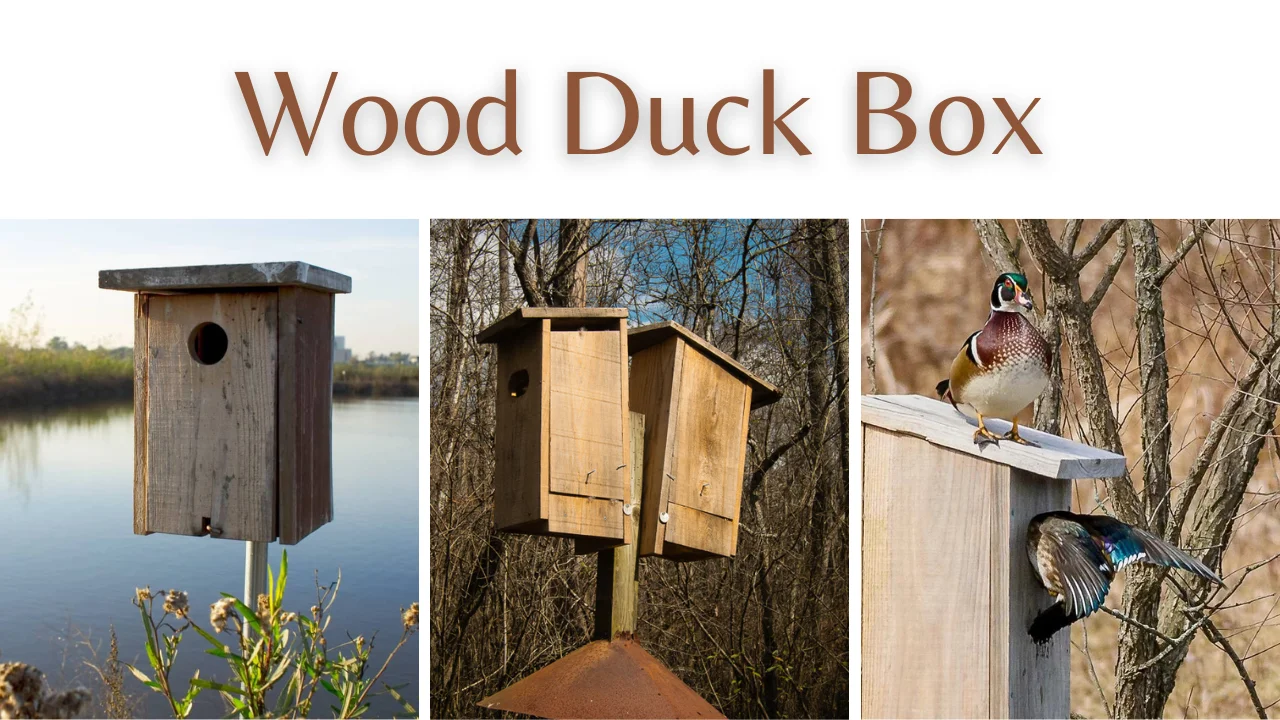Wood duck boxes, also known as nest boxes or duck houses, serve as vital tools in wildlife conservation efforts and offer a fascinating glimpse into the world of waterfowl. These specially designed structures provide safe and suitable nesting sites for wood ducks, a colorful and cherished waterfowl species.
Since habitat degradation reduces natural nesting places, wood duck boxes are crucial to maintaining healthy wood duck populations. These boxes mimic wood duck nesting chambers, providing a safe place to lay eggs and raise ducklings.
Wood duck boxes also allow birdwatchers and environmentalists to see these lovely animals up close. Monitoring the boxes may help preserve wood ducks by revealing their nesting behaviour and population trends.
This article delves into wood duck boxes, exploring their importance in wildlife conservation, how to build and install them, and the joy of witnessing wood ducks thrive in their specially designed homes.
The 10 Best Wood Duck Box
Following are the ten best Wood duck box plans:
1: Choice of Birdhouse
The following alternative may also be constructed in the form of a conventional birdhouse, so expanding its adaptability and the number of species of animals can assist in finding suitable housing.
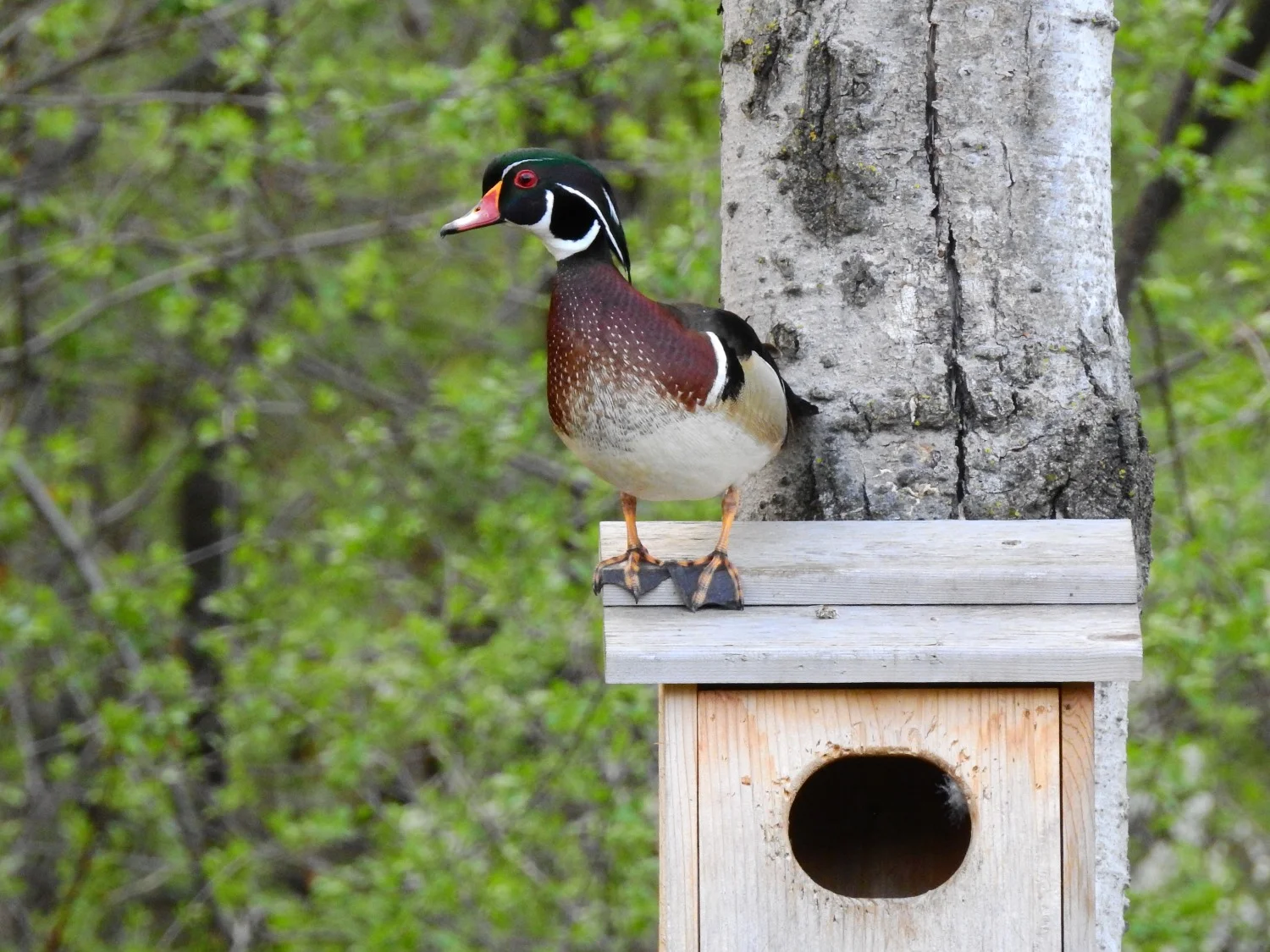
Source Pinterest
In addition, this handbook offers some useful advice that readers should remember while working on the building. To begin, you need to incline it ever-so-slightly to the side to cut down on the quantity of water that seeps within. It will help prevent any more damage.
As a rule, there must be around four inches of wood shavings at the bottom to provide a comfortable spot. Plastic is yet another substance that has yet to be considered an appropriate option because it can get excessively heated.
2: Using Plywood Materials
This initial set of instructions claims that you can construct 15 boxes from only four sheets of plywood, which is fantastic, particularly if you want to donate them to animal care organizations. Reduce unnecessary spending with this method, and it will be much better for the planet.
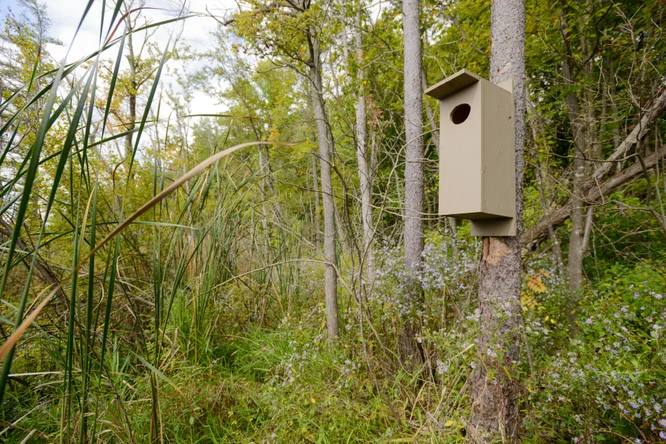
Source Pinterest
The inspiration for these warm and adorable containers comes from the near extinction of these beautiful creatures when their natural habitat was destroyed by farming and industrialization.
3: DIY Nesting Box Spot
The colorful duck species are being targeted for food and feathers due to the depletion of their habitats brought on by cutting wood and the draining of wetlands to make room for development.
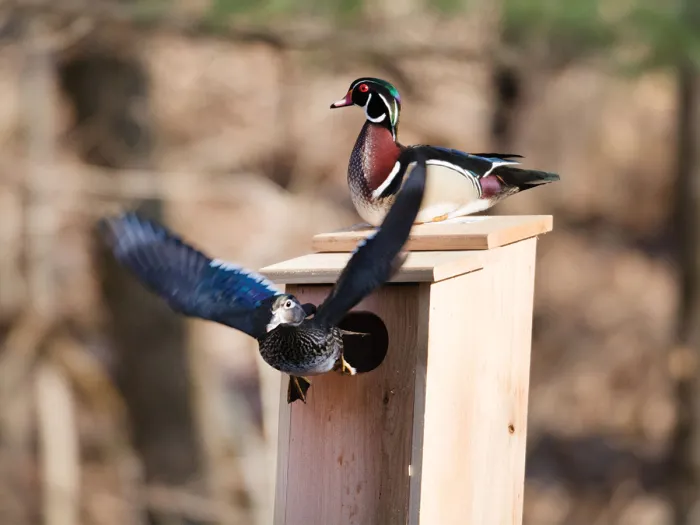
Source Pinterest
Because of this, they experienced a steep drop, which only began to reverse after hunting and protection rules were implemented.
Because of this, humans have begun constructing attractive boxes in the hopes that the birds would relocate there. They will actively seek out such cavities to lay their eggs in. The best way to contribute is to make a relaxing place with high-quality materials.
4: Adorable Weekend Activity
Your product might help these birds for decades to come if you do this on your own and have a chance to live in an area where they often roost; this is an excellent way to contribute to conservation efforts.

Source Pinterest
Obtaining high-quality timber is crucial for the success of this undertaking. Cedar and pine are common choices because they are inexpensive and sturdy. The longer a superior quality building can service the environment, the more value it provides. Wood shavings will need to be refilled annually, so plan accordingly.
5: Lots of Types
While wood is the most common material, you may be creative with many other things. Materials such as recyclable metal, cardboard, plastic, and wood fiberboard might be included.
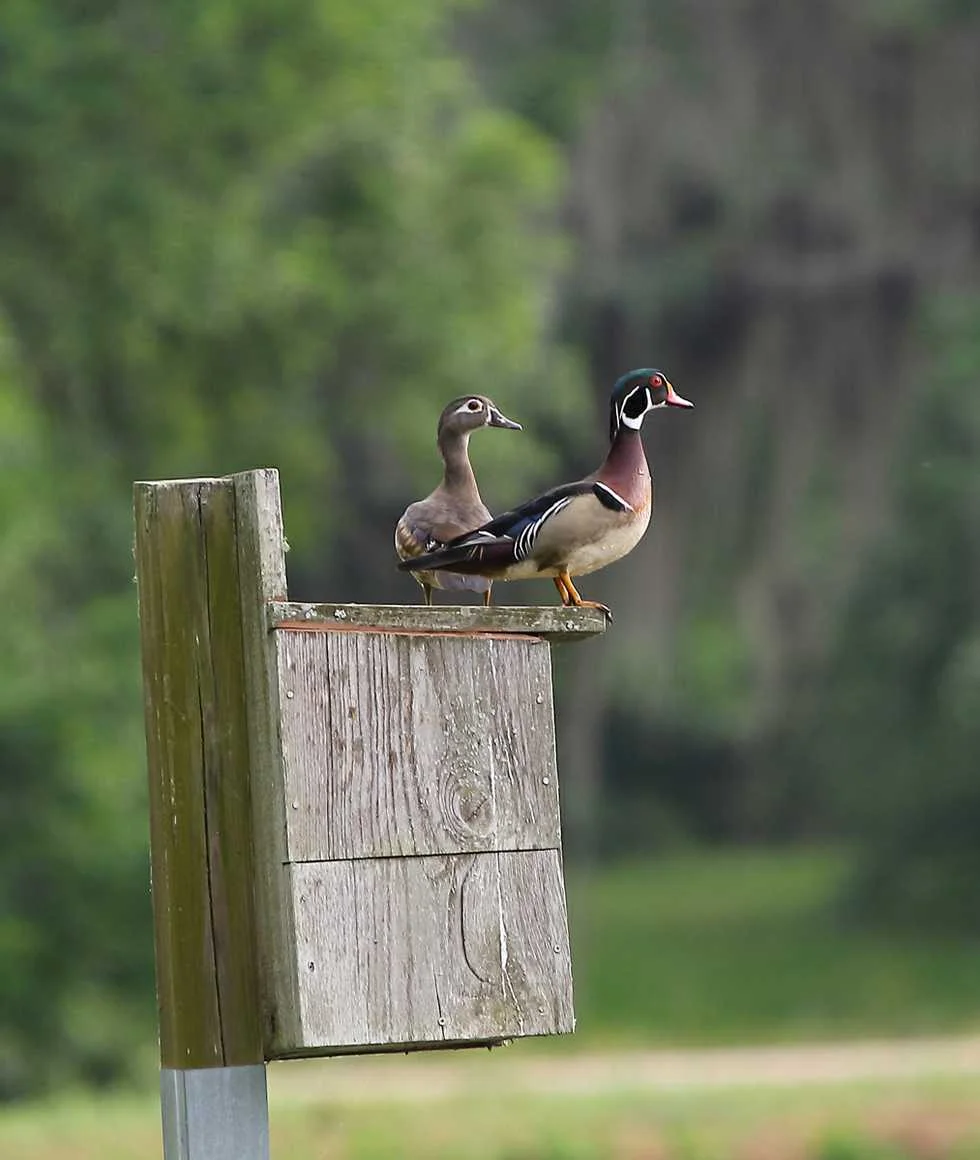
Source Pinterest
These can stand out too much, making it more difficult for wood ducks to accept them as nesting materials. However, consider doing so if you can recycle anything or find free materials for your project.
6: Construction Plan
The following document serves as a template and includes an in-depth lesson that should answer any questions you may have about completing the task. It is necessary to create a very small entrance hole in the building to ensure that the birds can enter and leave the building.
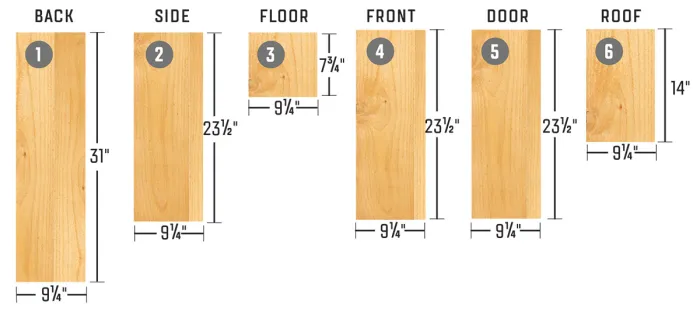
Source Pinterest
Also, make sure there is a mechanism to open and close the box so that the shavings may be taken yearly for cleaning. It should be done at least once a year.
Because the location also plays an important part in determining the result, you should ensure that the box is raised by a distance of 10 feet above land and 4 feet above sea level.
7: Nesting Box
Constructing a nesting box large enough to hold a clutch of ten to fourteen eggs is essential for the successful breeding of birds. Because of their longevity and resilience against the weather’s effects, materials like cedar, redwood, pine, or plywood are often utilized to accomplish this goal.
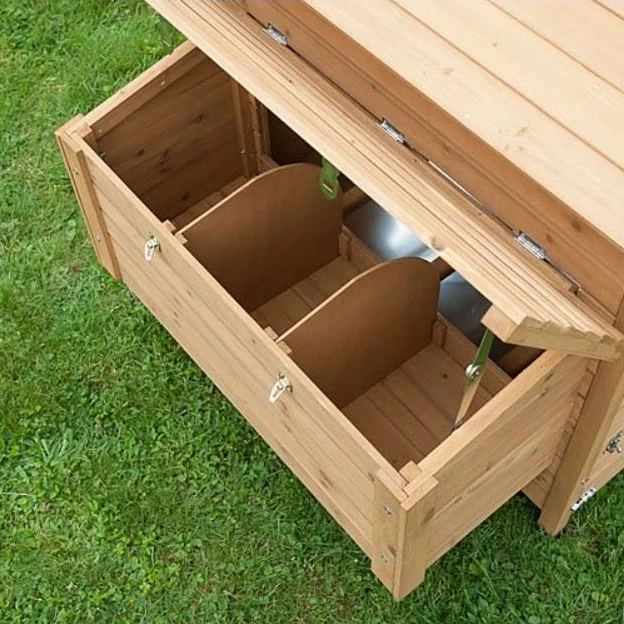
Source Pinterest
These materials also mix naturally with the trees surrounding the nesting box, making it more appealing to birds looking for a temporary place to call home.
n addition to assisting in the maintenance of bird populations, providing a warm, dry, and protected environment in which birds may raise their young gives nature lovers a chance to see the fascinating process of avian reproduction firsthand.
8: Beautiful House for Ducks
Here’s a different strategy that will be very helpful to those cute critters with fur. The author of this guide picked cedar wood because it is one of the few building materials that may naturally blend in with its surroundings.
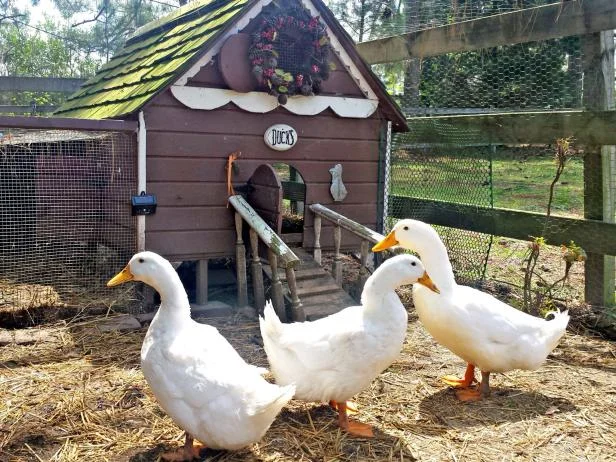
Source Pinterest
Because of its superior durability, cedar will help ensure this project lasts as long as possible. This guide also includes information on how to get access from the side, which will facilitate seasonal cleaning and monitoring.
Remember that early evening is the best time to view the building since the animals are most likely to depart to go foraging. Predators can plan their attacks most well at this time.
9: Outline of Construction
To construct a wood duck box successfully, you’ll need specific building supplies like cedar, yellow pine, or cypress planks, approximately an inch thick, but avoid pressure-treated wood.
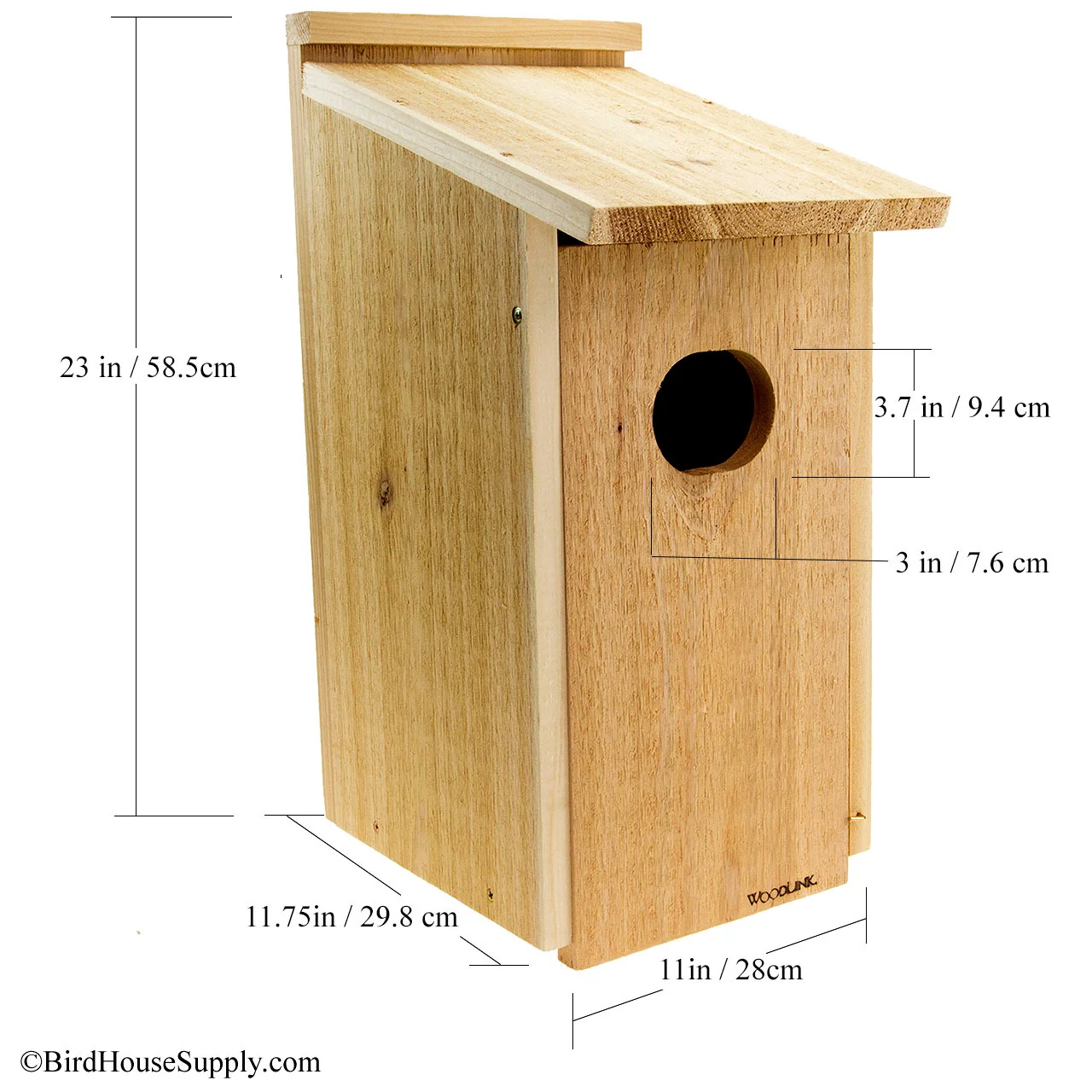
Source Pinterest
You’ll also require a weatherproof lock for easy access and cleaning and a predator guard to protect nesting ducks. Utilize wood screws for assembly, and consider using a wooden post for mounting.
To prevent water buildup during rain, drill small holes in the box’s base to allow drainage. Knowing these essential materials and steps is crucial for creating a suitable and safe nesting environment for wood ducks while contributing to their conservation efforts.
10: Informative Guide
You will not have to spend excessive time, which is a blessing, and this is something that even a novice can achieve in a couple of hours or less. The only thing you will need is a longboard that is resistant to the elements and is 12 feet in length.
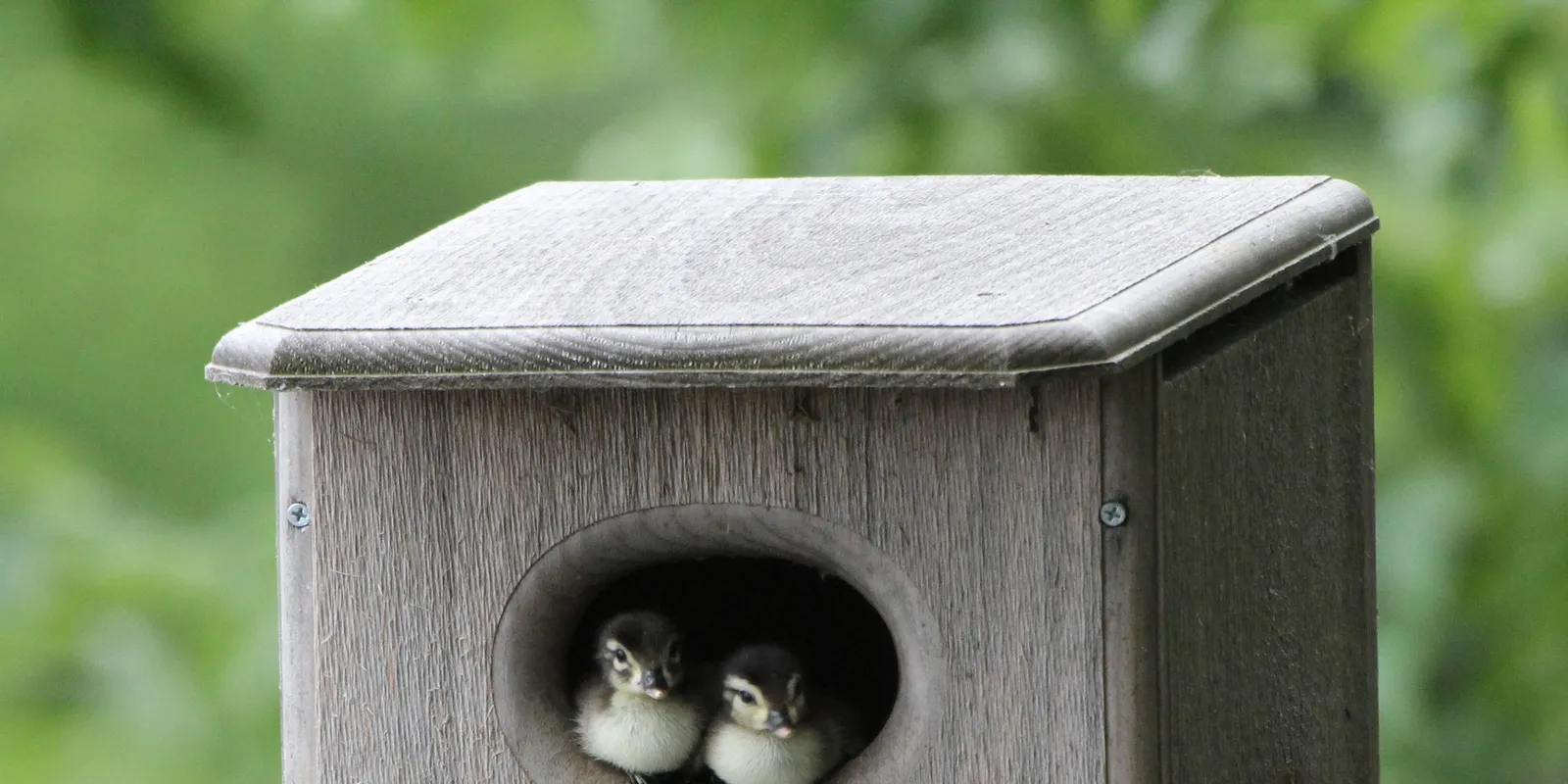
Source Pinterest
With this, you will create a variety of cutbacks. Cut these boards to the size you need, being careful to put them together in the way you want before you start drilling holes in them.
A drainage hole, an access hole, and a method to open and shut the structure to perform maintenance are other essential components of the construction.

